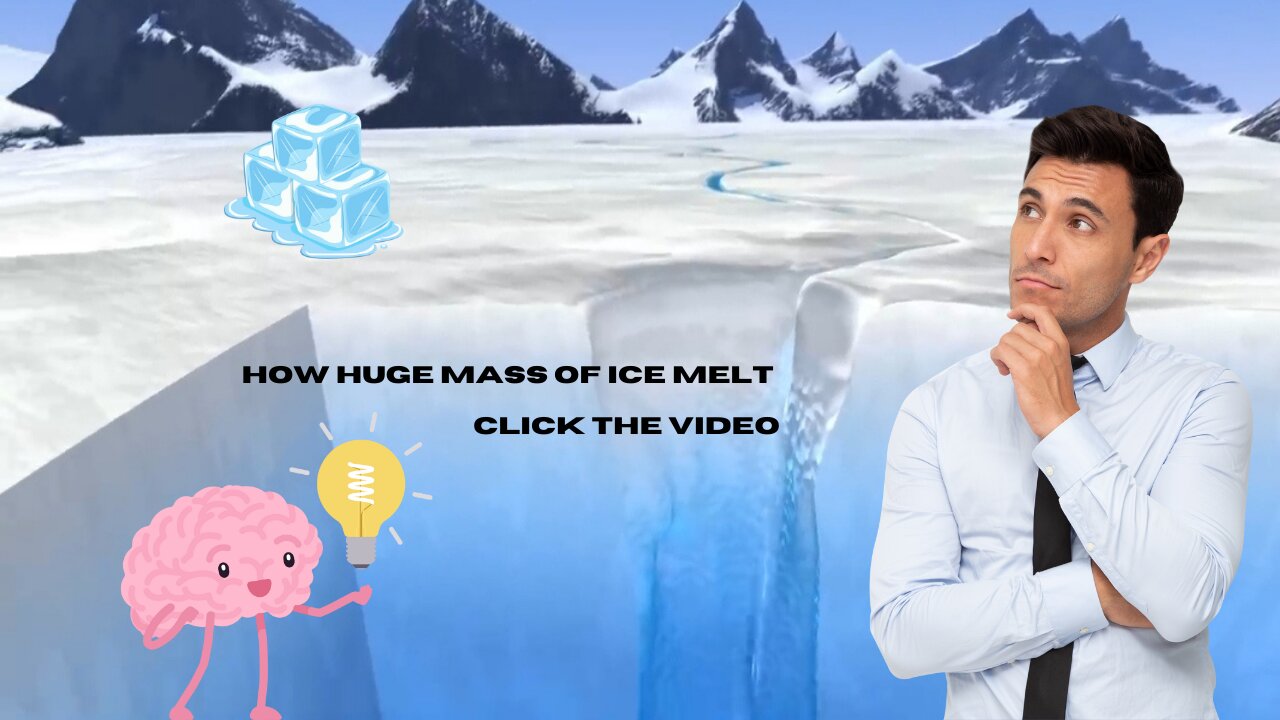Premium Only Content

Melting Giants: Exploring how Disappearing Glaciers
Glacier melting is a natural process by limited factors. As temperatures rise and climate patterns shift, glaciers begin to lose their ice mass, resulting in a gradual retreat or even a rapid collapse. The process can be described as the transformation of solid ice into liquid water.
When temperatures increase, the first noticeable change is the formation of meltwater on the surface of the glacier. As sunlight heats the ice, it begins to melt, creating streams and small pools. These temporary water bodies start to flow down through crevices, fissures, and moulins within the glacier, creating intricate networks beneath the surface.
As the meltwater seeps deeper into the glacier, it encounters internal friction and pressure, which gradually elevates the temperature. This combination of heat and pressure causes the ice to deform, creating channels and tunnels within the glacier where the water can flow freely.
The flowing water eventually reaches the base of the glacier, creating a lubricating effect that facilitates the glacier's movement. This basal water helps to reduce friction between the ice and the underlying bedrock, allowing the glacier to slide downhill at a faster rate. As a result, the glacier faces accelerated erosion, leading to a further thinning and loss of ice.
-
 58:59
58:59
MattMorseTV
5 hours ago $0.95 earned🔴Trump just BROKE Newsom.🔴
49.3K54 -
 18:14
18:14
Her Patriot Voice
5 hours agoWho Is WORSE for NYC: Trump Girl or Socialist?
24.2K23 -
 3:39:42
3:39:42
SavageJayGatsby
5 hours agoSpicy Saturday with Mally! | Road to 100 | $300 Weekly Goal for Spicy Bites!
31.3K1 -
 LIVE
LIVE
FomoTV
6 hours ago🚨 Swamp Theater: FBI Raids Bolton 🕵 Still NO Epstein Files, Trump's Troops & the Red Heifer Hoax 🐂 | Fomocast 08.23.25
66 watching -
 6:04:40
6:04:40
Akademiks
10 hours agoRoc Nation & Meg Thee Stallion did a 7 HOUR Deposition with me. Drake Secret Kid Finally Revealed.
49.9K2 -
 24:19
24:19
Stephen Gardner
6 hours ago🚨BREAKING: FBI Raid of John Bolton’s House Reveals THIS!
51.9K126 -
 8:31
8:31
MattMorseTV
8 hours ago $1.10 earnedTexas just did the IMPOSSIBLE.
46.2K60 -
 24:39
24:39
MYLUNCHBREAK CHANNEL PAGE
1 day agoInterdimensional Beings at Borobudur
54.6K29 -
 12:42
12:42
Scammer Payback
1 day agoCalling Scammers who were Raided
25.7K11 -
 23:31
23:31
IsaacButterfield
19 hours ago $0.10 earnedThe Woke Mob Is Really CANCELLING Matt Rife For THIS…
23.4K16